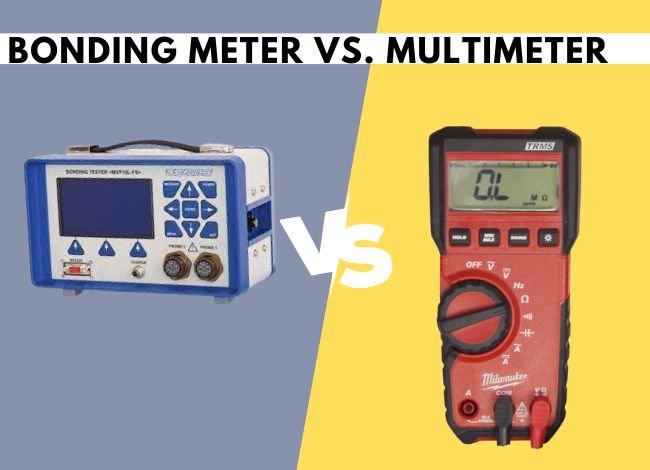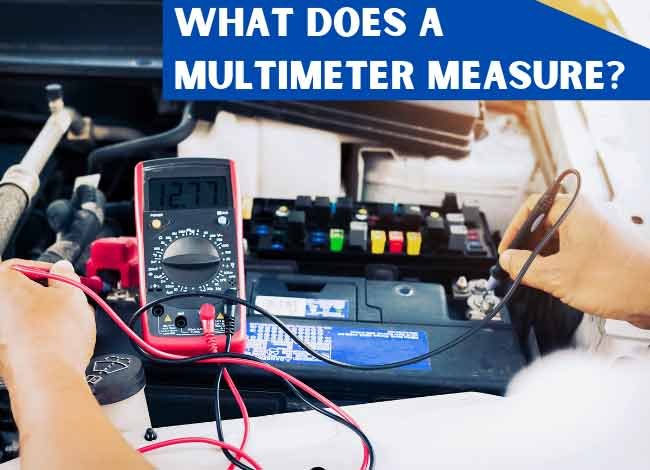Last Updated on August 30, 2025
Digital multimeters have become indispensable tools in today’s technical professions. In fact, many technicians, engineers, electricians, and network professionals rely heavily on multimeters for accurate testing and diagnostics. Among the leading brands, Fluke stands out as one of the most trusted names, not just in the USA, but worldwide.
Two of its most advanced models, the Fluke 287 and Fluke 289, are especially popular among professionals who demand precision and reliability. While these multimeters come with a premium price tag, their high accuracy, robust build quality, and cutting-edge features make them worth the investment. If you’re considering either of these models, this Fluke 287 vs 289 review will help you understand their differences and choose the right one for your needs.
These tools are essential for troubleshooting and testing in a wide range of environments, from industrial systems to electronic devices. The right digital multimeter can significantly improve the efficiency and accuracy of a job.
Fluke 287 vs 289 Multimeter Comparison Table:
Feature |
Fluke 287 |
Fluke 289 |
|---|---|---|
| Display | 50,000 count large LCD with backlight | 50,000 count ¼ VGA dot-matrix display with graphing |
| Data Logging | Yes, with TrendCapture | Advanced logging with TrendCapture & expanded memory |
| AC/DC Voltage | Up to 1000V (True-RMS) | Up to 1000V (True-RMS) |
| AC/DC Current | Up to 10A | Up to 10A |
| Resistance | Up to 500 MΩ | Up to 500 MΩ |
| Capacitance | Up to 100 mF | Up to 100 mF |
| Frequency | 100 kHz | 100 kHz |
| Temperature | With optional probe | With optional probe |
| Extra Feature | Excellent for electronics & R&D | Low-pass filter for VFD accuracy, industrial-grade |
| Best For | Engineers, researchers, advanced electronics users | Industrial technicians, troubleshooting complex systems |
Pros and Cons of Fluke 287
- ✔️ Large high-resolution display
- ✔️ Accurate True-RMS measurements
- ✔️ TrendCapture for reviewing data
- ❌ Bulkier than basic models
- ❌ More expensive compared to entry-level multimeters
Pros and Cons of Fluke 289
- ✔️ Advanced data logging with graphing
- ✔️ Industrial-grade accuracy with low-pass filter
- ✔️ Large VGA display for detailed analysis
- ❌ Expensive – aimed at professionals
- ❌ Learning curve for beginners
Fluke 287 vs 289 Overview
Fluke has been a leader in precision measurement tools for over 50 years, offering a broad range of multimeters suited for both beginners and professionals. Among their extensive lineup, the Fluke 287 and Fluke 289 stand out as two of the most feature-rich logging multimeters available.
Although both models share a similar design and user interface, they differ in certain performance aspects. These differences are crucial when it comes to specific applications such as data logging, trend capture, and advanced diagnostics.
Digital multimeters are essential tools for most of the present-day professions. As a matter of fact, a good number of technicians, engineers, and computer network professionals can’t work well without a multimeter. Fluke is one of the most popular multimeter brands in the USA and the entire world. And Both Fluke 287 and Fluke 289 multimeters are great multimeters for professionals. Although they are not cheap, high accuracy, advanced features justify their price. Read this Fluke 287 VS 289 review to know more about these two multimeters.
These tools help in troubleshooting and testing in a wide array of environments. A perfect digital multimeter can be a big difference when it comes to carrying out a task correctly and efficiently.
Difference between Fluke 287 and 289
Features and measurements |
Fluke 287 |
Fluke 289 |
| Low pass filter | No | Help to eliminate high-frequency interference |
| Low impedance AC Volts function | No | Yes |
| Measuring low ohms | No | Can measure resistances less than 50 ohms |
| Motor Drive (ASD) Measurements | No | Yes |
| Battery Type | AA | AA |
| Storage | Hard Drive | Internal Memory |
| Interfaces I/O | Analog Output, Analog Input | IR |
| Decibels | No | Yes |
| Height | 2.38 in | 4.53 in |
| Length | 4.03 in | 1.08 in |
| Price |  Check Price Check Price |
 Check Price Check Price |
Even though Fluke 287 and Fluke 289 have similar features, they also have some differences. For instance, the Fluke 289 features a low-pass filter for getting rid of high-frequency interference, which the Fluke 287 doesn’t have. In addition, the Fluke 289 comes with a low ohms range for measuring resistances that are less than 50 ohms, and it as well features a low impedance AC volts function. Another difference that is not usually taken into account is that AAA batteries power Fluke 289 multimeters while AA batteries power 287 DMM.
Related Product: Comparison Chart: Fluke 117 VS Fluke 115
Similarities between Fluke 287 and Fluke 289
Features and measurements |
Fluke 287 |
Fluke 289 |
| Display | digital | Digital |
| Height | 8.75 inches | 8.75 inches |
| Weight | 1.92 lbs | 1.92 lbs |
| Max. Temperature | 2462˚F | 2462˚F |
| Functionality | DC volts, AC volts, DC current, AC current, Capacitance, Temperature, Frequency, and Resistance | DC/AC volts, DC current, AC current, Capacitance, Temperature, Frequency, and Resistance |
| Safety | CAT.II 300V | CAT.II 300V |
| Max. Frequency | 1 MHZ | 1 MHZ |
| Temperature | Yes | Yes |
| Analog Bargraph on Display | Yes | Yes |
| All Common Features | Yes | Yes |
| Price |  Check Price Check Price |
 Check Price Check Price |
From the above table, you can clearly see that these two multimeters have a lot of similarities, though we have not exhausted all of them. The Fluke 287 and 289 DMMs come with a large display screen with a backlight for taking readings, even in dark places. The display screen has more resolution than the Fluke 101 and the Fluke 115 basic multimeters. They are of the same height, width, depth, and weight. So, you won’t have a problem slipping them into your pocket. This also makes it easy for you, especially if you’re working in a tight place.
The units come with a recording feature that simplifies things; you can take readings even when you are not there. Also, the gadgets are compact and very easy to handle during use. They have a standalone feature, which means you don’t have to hold them while troubleshooting. With a count of 50,000, you can use these units to measure voltage, current, resistance, frequency, continuity, capacitance, and temperature. Other key features include a peak hold and overload protector.
Related article: Fluke 179 Vs 87V: Which one is better to buy?
Fluke 287 Overview: Features & Specifications
Featuring a multi-lingual interface, the Fluke 287 multimeter is an easy-to-use unit that will provide you with accurate and quick results. It is a True RMS device that offers accurate readings when measuring nonlinear or linear loads, where the current or voltage has a nonsinusoidal or sinusoidal waveform. The backlit LCD display helps the user to read numerals even in poorly lit areas. The large 50,000 count display shows crystal clear images. The multimeter is compactly designed for easy use and storage in the backpack or pocket. Other amazing features of the 287 multimeters include auto and manual-ranging and data logging, which you will not get in the Fluke 117 True-RMS multimeter. These and many other features set aside this multimeter from others, making it suitable for complex electronics, power distribution, and plant automation issues.
 Check Price
Check Price
Key Features
-
True-RMS accuracy for precise AC voltage and current measurements.
-
Large 50,000 count display with white backlight and high resolution.
-
TrendCapture function to graphically review logged data directly on the meter.
-
Built-in data logging with expanded memory for unattended monitoring.
-
Multiple measurement functions including voltage, current, resistance, frequency, capacitance, continuity, and diode testing.
-
USB connectivity for PC interface and data analysis with Fluke software.
-
Multiple languages support in the user interface.
Specifications
-
DC Voltage Range: Up to 1000V
-
AC Voltage Range: Up to 1000V (True-RMS)
-
DC Current Range: Up to 10A
-
AC Current Range: Up to 10A (True-RMS)
-
Resistance: Up to 500 MΩ
-
Capacitance: Up to 100 mF
-
Frequency: 100 kHz
-
Temperature Measurement: With optional probe
-
Display Count: 50,000
-
Battery Life: Approx. 100 hours (without backlight)
Fluke 289 Overview: Features & Specifications
If you are dealing with applications that need high accuracy, then the Fluke 289 digital HVAC multimeter with True RMS is an ideal device for you. The Fluke 289 multimeter features a large display screen with a backlight for use in a poorly lit area. In addition, it has a compact and sleek design that is easy to handle and keep. Moreover, the gadget has a real-time clock for automatic time stamping of saved readings. It can save up to 15 000 recordings. The best part is that it quickly documents design performance and graphically shows what took place. Thus, this simplifies things for electricians. With a 10-year warranty, this is a worthwhile investment from a reliable brand.
 Check Price
Check Price
Key Features
-
True-RMS accuracy ensures precise AC/DC voltage and current measurements.
-
Large 50,000 count display with a ¼ VGA dot-matrix screen for graphing and trend analysis.
-
TrendCapture technology allows users to review and analyze logged readings without a PC.
-
Advanced data logging with expanded memory to record events and intermittent problems.
-
Multiple measurement functions including voltage, current, resistance, frequency, capacitance, temperature, continuity, and diode testing.
-
Low-pass filter for accurate voltage and frequency readings on variable frequency drives (VFDs).
-
USB connectivity to transfer logged data to PC software for detailed reporting.
-
Multiple languages are supported in the user interface.
Specifications
-
DC Voltage Range: Up to 1000V
-
AC Voltage Range: Up to 1000V (True-RMS)
-
DC Current Range: Up to 10A
-
AC Current Range: Up to 10A (True-RMS)
-
Resistance: Up to 500 MΩ
-
Capacitance: Up to 100 mF
-
Frequency: 100 kHz
-
Temperature Measurement: With optional probe
-
Display Count: 50,000 (¼ VGA display with graphing)
-
Battery Life: Approx. 100 hours (without backlight)
Which Multimeter Should You Buy?
Both the Fluke 287 and Fluke 289 are premium quality True-RMS multimeters.
If you are an engineer or electronics researcher, the Fluke 287 is a great choice for high-accuracy testing and logging.
For industrial technicians and electricians who deal with variable frequency drives (VFDs) and complex troubleshooting, the Fluke 289 is the superior option with advanced graphing and filtering features.
Frequently Asked Questions (FAQ)
Which is better, Fluke 287 or Fluke 289?
The Fluke 289 is more advanced with industrial-grade features and graphing capabilities, while the Fluke 287 is ideal for R&D and electronics testing.
What is the main difference between Fluke 287 and 289?
The Fluke 289 offers a VGA dot-matrix display, advanced data logging, and a low-pass filter, while the Fluke 287 provides standard logging with TrendCapture.
Are both Fluke 287 and Fluke 289 True-RMS multimeters?
Yes, both the Fluke 287 and 289 are True-RMS digital multimeters capable of measuring AC/DC voltage, current, resistance, capacitance, frequency, and temperature.
Which one is best for industrial use?
The Fluke 289 is best suited for industrial environments because of its low-pass filter and advanced troubleshooting features.




Hi, thanks for some useful comparison. One correction: The Fluke 289 uses six AA batteries.
Thank you informative.